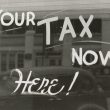A long journey ends
It was just over 20 years ago that the FCC issued a Petition for Special Relief filed by the broadcast television industry, effectively putting a stop to the FCC’s proceeding to provide more spectrum sharing between UHF television stations and land mobile systems.
The proceeding to explore additional land mobile/UHF-TV sharing began in 1985. The concept was that liberalization of the so-called UHF “taboos” would allow additional land mobile use of channels in the 470-512 MHz range. Literally on the eve of an expected positive FCC decision for the land mobile industry, the Association of Maximum Service Telecasters (AMST) filed a petition on Feb. 13, 1987, claiming that the proceeding should be stayed pending a review of how much additional spectrum would be needed by the television industry for an anticipated Advanced Television Service (ATV). Believe it or not, AMST believed at the time that broadcasters should be allocated more than their current 6 MHz allocation to provide ATV.
Twenty painstaking years later, digital television will be mandatory, incorporated into the same 6 MHz of spectrum previously allocated to each broadcast television station, and enough spectrum will be left over to move television stations lower in the band and provide an exclusive allocation for public safety and additional wireless services. In doing so, the FCC has created a unique public/private partnership for the band that hopefully will bear fruit soon.
Recently, I was watching a television program designed to educate the public on the transition to digital television and what viewers need to do to see digital programming. What amused me most was the claim during the program that the impetus for the change was the need to make more public-safety spectrum available. Sorry folks, but the public-safety sector was ready to expand its use of the UHF band 20 years ago.
Nevertheless, we are on the verge of being able to take advantage of the excess spectrum in the band, and the public will benefit not only from greater wireless opportunities (either the commercial offering or the public-safety gains) but also from 1080i resolution, a startling improvement in quality on a large screen. These twin benefits have been a long time in coming and hopefully will be well worth the wait.
Unfortunately, the delay in figuring out the D Block dilemma means use of that part of the band won’t happen as soon as the spectrum is available. While that in and of itself is a shame, we must remember that this is really a unique, out-of-the-box plan — one that requires a lot of thought and considerations by all parties and some really creative thinking. Although it may be frustrating, patience is an important virtue in this situation. While we’re probably not talking about some new, gee-whiz technology for the band, we are talking about a new, gee-whiz business plan, which actually makes it in some ways more difficult than dealing with technology. Technology can be pre-tested and tried; a new business paradigm can’t be.
In 20 years, we’ve made a dramatic change in the manner in which the UHF band is allocated. The next 20 will see a dramatic change in how the band is actually used. We all hope for success for viewers and first responders.
Alan Tilles is counsel to numerous entities in the private radio and Internet industries. He is a partner in the law firm of Shulman Rogers Gandal Pordy & Ecker and can be reached at [email protected].

















